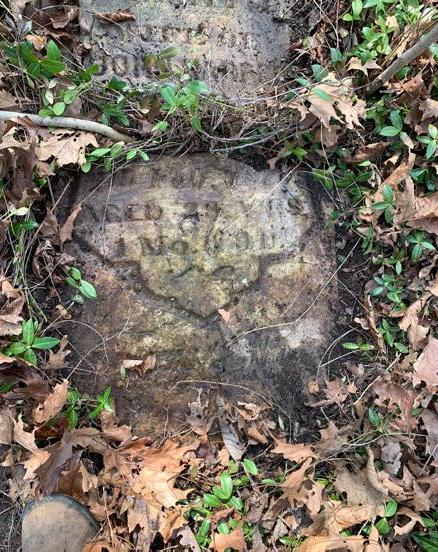
4 minute read
Working to preserve an Underground Railroad cemetery - part 2
By Mike Renzella The Haldimand Press
The BAO thanks The Haldimand Press for permission to republish its article, published on Sept. 30, 2021.
Last week, The Haldimand Press spoke with Aileen Duncan, whose ancestors escaped slavery, settled in Canfield, and are buried in a cemetery once lost to time that is now a central marker of Haldimand County’s ties to the Underground Railroad and the elaborate tapestry of Black history in the region.
“Haldimand has a rich history that has never been told. My husband and I had a farm in the area where most of the freedom seekers settled south of Canfield, so I was familiar with a few families,” said local historian and author Sylvia Weaver, currently writing a book about the Street Cemetery. She was also the driving force behind a settlement marker honouring black freedom seekers at a public cemetery in the small community in 2017.
On the Street family she said, “It was a humble beginning and over the years they used their 10 by 14 log cabin for their 14 children, which served as their kitchen, dining room, sleeping quarters, and a place of worship.”

BAO Inspector Andrew Reynolds at Street Cemetery
A child was the first buried at Street Cemetery
The first person to be buried at the Street Cemetery was two-year-old Marianne Street on Sept. 10, 1846 and the last was William Andrew Barnes, who died in February, 1943.
Weaver said members of the Street family would have been among the first to clear woods out of the area to build a cabin, and that members of the family were involved in many historically significant undertakings, including the construction of the Talbot Trail, or Highway 3 as it’s known today, and the Grand Trunk railroad, working hand-in-hand with the European pioneers who were also settling in the area at the time.
Weaver first heard about the site from Michael Konkle, a Dunnville resident who had been working with Betty Browne, a descendant of those buried at the Street family cemetery. The two had made an unsuccessful attempt to save the cemetery back in 2006.
“Betty was very passionate about her ancestors…. I felt the torch was passed to me,” said Weaver, noting that Browne unfortunately passed away a few years ago, prior to recent activity that will see the cemetery transferred to the County and turned into a public memorial site.
BAO licensing ensures maintenance
This plan began when Weaver reached out to both the County and the Bereavement Authority Office (BAO), sending them as much information as she could about the cemetery.
David Brazeau, Manager of Communications at the BAO, said abandoned cemeteries are an issue across Ontario and Canada. “A lot of this happened when Canada was still a pretty new country and there weren’t as many regulations and government means in place to track them,” he explained, estimating that there are hundreds of similar sites across Canada. “Every couple of weeks we find out about a cemetery … that appears to have been forgotten.”
The BAO is responsible for determining ownership over these sites and ensuring maintenance work is done by the owners, such as cutting the grass or clearing debris, to ensure safe access for the public: “It’s all about preserving heritage, history, and family connections.”
“Sometimes these cemeteries don’t have an owner, per say, but they’re always on somebody’s land,” Brazeau added. “The most common thing we have happen for a cemetery that a property owner may not want, is that the local municipality assumes responsibility for it.”
Council approved $100,000 to restore and maintain the cemetery
Katrina Schmitz, Manager of Community Developments and Partnerships for Haldimand County, provided an update on what is happening with the Street Cemetery currently: “The County’s lawyers continue to work on the legal transfer of the Street Cemetery property to Haldimand County, as well as the establishment of the required easements/agreements for the pathway to access the cemetery.”
She said that maintenance plans are contingent on the transfer, and that until that has been completed, no official timeline could be given as for when the public will be able to visit the site. Previously, Council approved $100,000 in funding to restore and maintain the site.
“Haldimand County remains eager to begin work on the Street Cemetery,” said Schmitz.

For future generations
Brazeau said the County has been complying with the various laws and regulations put forth by government ministries, including requirements concerning the environment, land transfer, and easement approvals: “They’ve been doing all kinds of work to make sure this happens. It’s been a really good partnership with them.”
Explorations of the site so far have identified about eight to 10 graves at the Street Cemetery, but more may be hidden: “We think there may be a few more,” concluded Brazeau. “It’s important to maintain them so they are there for future generations for people to feel their connection to that cemetery and to local and even national history.”










